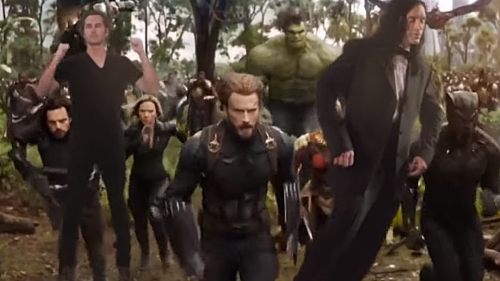THE DISASTER ARTIST And The Benefits Of Examining How Bad Movies Are Made
The Disaster Artist is in theaters now. Get your tickets here!
In his 1999 nonfiction book On Writing, horror maestro Stephen King touts the usefulness of badly written books, not only as a confidence booster, but as a lesson in what not to do. The benefits of a bad novel, he says, are equivalent to a semester in a high-quality writing program, even one that comes with added frills, such as high-profile guest speakers.
Bad movies can serve a similar educational purpose in its demonstration of what to avoid when making a film. But more importantly, a bad movie can go a long way towards teaching what goes into making a film, both in terms of what's needed to elevate a film's quality, and what role everyone plays in realizing an artistic vision.
The best example of this is seen in Greg Sestero's book The Disaster Artist, which chronicled his time making The Room. For the uninitiated, The Room is a 2003 film by Tommy Wiseau that's well-known for all the wrong reasons - from cancer diagnoses that get a single scene treatment to characters who disappear halfway through the film with no explanation, The Room is in the upper echelon of bad movies.
Sestero's book, however, in the process of providing insight into how the movie was made, also functions as an excellent guide for beginners and those unfamiliar with the movie industry to learn about the various ins and outs that go into putting on a successful production. In illustrating everything Wiseau doesn't know about filmmaking, Sestero proceeds to highlight the important roles that are necessary in a successful film production, and how each piece contributes to a cohesive whole. And this is the biggest contribution The Room has made to the world; with The Disaster Artist, Wiseau's cluelessness about moviemaking becomes a crash course for everyone else, opening people's eyes to jobs they may not even know exist, but which have a noticeable impact on the final product.
Take, for example, costuming. The Disaster Artist highlights how Tommy's wardrobe in The Room came about as a result of a perceived slight on the part of the costume designer, with Wiseau selecting his outfit when the costume designer was away from the set on a film-related task. A well-dressed character is rarely noticed by audiences, with notable exceptions, such as James Bond's expensive suits. But Wiseau's outfit in The Room highlights the important role the costume designer plays in a film, as the selection of his own outfit only draws attention to Wiseau, and not in a good way. In a good movie, this would be distracting, but in a film like The Room, it's just part of the overall tapestry that makes up the film. Nonetheless, the importance of costume designers can be neatly summed up by saying “Wiseau refused to listen to his, and the end result can be seen in the film”.
And this spreads across several aspects of the movie; The Disaster Artist is a chronicling of all the poor choices Wiseau made in bringing his vision to the big screen, all the people he ignored and all the ways in which he treated the cast and crew poorly. Reading the book gives people an understanding of how various positions in a film crew interact, and how involving experienced people, and listening to their input, could have affected the final product. In the process of illustrating this, it works as an outline of what positions on a film crew hold what responsibilities, and how much effort each and every person puts in to make sure a film turns out well. Knowing that the art department is responsible for building sets is valuable knowledge, and knowing how much effort goes into building and dismantling sets, including financial costs, is just as important.
Are there other avenues to learn that morning light is the best outdoor light to shoot in, and that the standard industry practice is to rent cameras, not buy them? Definitely. Is it possible that an aspiring filmmaker would learn that film cameras and HD cameras require different crews doing different functions before they started making their first film? Most assuredly. Could a film fan learn the role of a line producer, and how crucial the position is to ensuring a film shoot runs smoothly, from a different source? Without a doubt. But The Disaster Artist, in conjunction with The Room, offers practical methods of learning these important filmmaking aspects, with the results of the outlined decisions visible onscreen for people to see. Someone interested in what goes on behind the scenes of a movie can look at The Room to see the effects of what Sestero outlines in The Disaster Artist. In addition, not only can people draw a straight line from a job Wiseau stepped on to implement his idea, but they can see how his decision negatively impacted the film, giving people an idea of what not to do. In this way, it serves as a crash course in multiple ways.
And this is ultimately the benefit of bad films; showing us what can be done differently and whose responsibility that is. Good films can be inspiring, driving people to new heights of achievement or renewing their interest in filmmaking, but bad films can be informative and educational in a way that's sometimes more useful. By studying them and pinpointing what went wrong, bad films afford an opportunity for people to learn more about the craft, understand the different behind-the-scenes roles that go into making a movie successful, and know what pitfalls to avoid when working on their own feature. So the presence of more bad films is a good thing, as long as they come with analysis. on what went wrong. The Disaster Artist is an excellent book in that regard, and if more movies and books follow their lead, the film world will be better for it.



